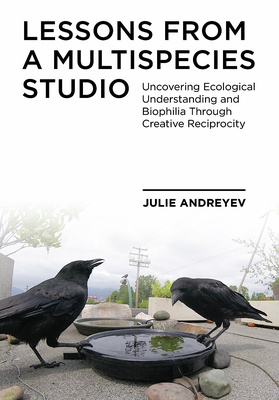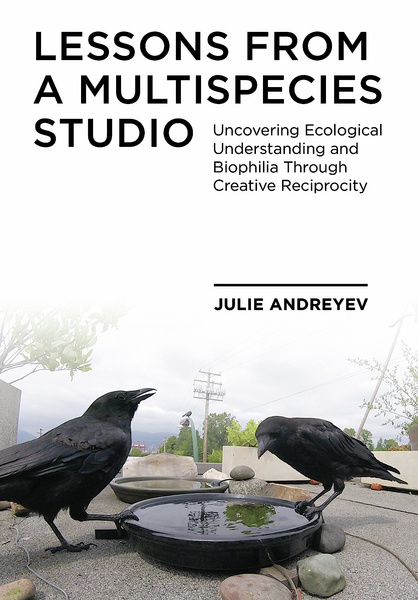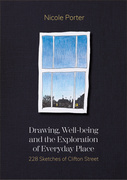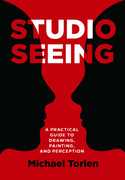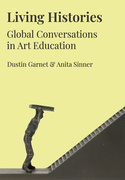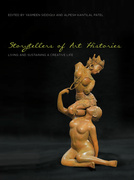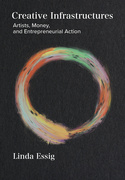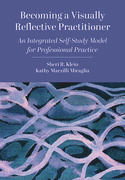Lessons from a Multispecies Studio (Book)
Uncovering Ecological Understanding and Biophilia through Creative Reciprocity
New critical discourse and applied methods based on the author’s original research and interspecies art practice, Animal Lover. Each chapter narrates the creative processes of one project, including the worlds of canines, salmon, birds and forest communities, and how these encounters transformed her outlook on Earth and all life. 50 half-tones with colour plate section
Edition
A highly original book in which the author proposes an expanded field of aesthetics, guided by her philosophy and approach to working, through the ways that philosophy can be manifested in art. She demonstrates the depth and complexity that she brings to her work through a sustained and committed relationship to working with animals across multiple projects.
The book tells real-world stories about the author’s creative encounters – with animals, plant life, mineral beings and forest ecosystems – in her Vancouver-based interspecies art practice, Animal Lover, and how they shifted her outlook on the Earth and all of life. Each chapter presents a weaving together of personal reflection, interdisciplinary research, critical thought and art methods. The threads converge on this main point: the need to move away from anthropocentrism and towards ecological understanding, reciprocity and biophilia. The local journeys in each chapter are guided by more-than-human ways of knowing which provide an expanded sense of the world and an understanding of the imperative for action. This book is an invitation to readers to step into more-than-human worlds, re-sense life and re-think their relationship with the planet and all its inhabitants. It asks readers to slow down, look around and listen – and feel. Love for life is practised by all beings in their lively projects. It is what joins us together in the relational flourishing that is the vital wondrous complexity of the Earth.
The Anthropocene is a term used to describe the geological era in which we live, marking the realization that humans have become such a force that we are affecting the Earth’s air, lands, oceans, climate. At its core, in the modern Eurocentric societies that typify this era, is an entrenched worldview of nature as a means to fuel global capitalist-colonial systems. This anthropocentric worldview justifies the colonization and exploitation of ecosystems and nonhuman life, seen as ‘resources’ available for human expansion and prosperity, and readily available as free labour. The consequential outcomes are manifest in today’s climate emergency and ecological degradations including animal slavery, industrial farming, over-fishing, deforestation and habitat loss, and the coming environmental collapse with its sixth mass extinction. Within recent decades, the sustainability of anthropocentric views have been called into question across disciplines. Lessons from a Multispecies Art Studio joins with these movements, and offers new applied approaches – from interspecies art – to help shape and evolve human outlooks, emotions and actions.
Primary readership will be research-creation academic artists working with animals, and researchers working around animals; more-than-human-animal activists; artists and emerging artists, as well as to art theorists and to those with a strong interest in environmental values.
Julie Andreyev is a Vancouver based artist-activist, researcher and educator. Andreyev has a Ph.D. from Simon Fraser University, and is associate professor at Emily Carr University of Art + Design where she teaches in the New Media + Sound Arts major, and critical studies courses.
Introduction
Dogs
Dog lessons
Early days
Dog communications
Communication ethics
Transformation
EPIC_Tom
Crows and Stones
A gift from a crow
Good neighbours
Crow mind and narrative ethics
Stone communications
Stone aesthetics
Ruins
Other gifts
Crow Stone Tone Poem
New gift, new art
Salmon and River
Salmon lesson
River
The Adams River spawning grounds
Salmon migration projects
Fish ways of knowing
Salmon People
Forest
Dawn
The forest
Life’s beginnings
Phyto-fungal-communications
Interspecies indeterminacy and biophilic attention
Anthrophony
Old trees
Biophilia
Afterword
Acknowledgements

